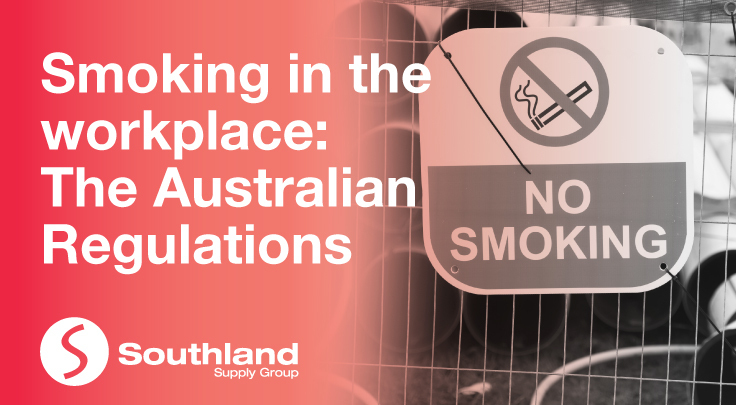Smoking in the workplace: The Australian Regulations

Smoking is one of the leading causes of preventable disease and death in Australia. Workplace smoking can be a serious safety and health hazard and a cause of conflict between staff. Aside from harming the smoker’s health, it is a long-known fact that passive smoking causes irritation to non-smokers, especially those who are subject to allergies or asthma. The negative health effects of smoking can multiply if a person is at the same time exposed to other hazardous substances in the environment such as asbestos.
In addition to being a serious health hazard, smoking is also an occupational safety hazard. The likelihood of fires and explosions in buildings where smoking is allowed is considerably higher than in buildings with a nonsmoking policy. The occupational hazards caused by smoking can be reduced by marking areas with No Smoking Signs and having other areas where smoking is allowed marked with a Designated Smoking Area Sign.
The Bureau of Statistics says tobacco is the largest preventable cause of death and disease in Australia. It is responsible for killing 19,000 Australians a year and 9% of deaths resulting from a related disease.
Based on the National health Survey conducted by the Australian Bureau of Statistics in December 2018, the numbers of daily smokers have halved to 12.8% over the last 20 years, with some switching to vaping as an alternative.
Smoking laws in Australia
The obvious negative impact of smoking on health and safety has resulted in changes in the law across Australia. In most states, smoking is banned in all enclosed public places to protect people, particularly children, from exposure to second-hand smoke.
The law includes:
- No smoking in cars carrying children less than 17 years of age.
- No smoking in all outdoor eating areas (i.e. restaurants, hotels, cafes and food outlets).
- No smoking within 10 metres of children’s playground equipment.
- No smoking between the flags at patrolled beaches.
- No smoking in all indoor areas of pubs, bars and clubs.
- Placing all tobacco products out of sight at point-of-sale
Employer responsibilities
- Ensure that smoking in or around the workplace does not create a risk to their own or anyone else’s health and safety.
- Manage the risks by identifying the hazards, assessing the risks and taking action to eliminate or control them.
Benefits of a smoke-free workplace:
- Obviously, it can enhance the health, safety and productivity of employees of the workforce. Nonsmokers are less likely to miss work due to illness.
- Other employees and visitors are protected from the hazards of secondhand smoke. Adults exposed to passive smoking report a higher incidence of chest illness and are more likely to miss work.
- A smoke-free workplace helps smokers who are trying to quit or cut down. The sight or smell of others smoking can be a major trigger to smoke for those trying to cut down or stop smoking.
Workplaces are a great setting for promoting healthy attitudes towards smoking, especially through workplace education and awareness. By supporting employees to quit smoking, employers can benefit from a healthier and happier workforce and a safer workplace for everyone.
If you need any assistance in identifying the proper smoking signages to have in your workplace, Southland can help! We customise safety sign wording and sizes to fit your workplace needs. For more details, visit our website at https://www.southland.com.au/
